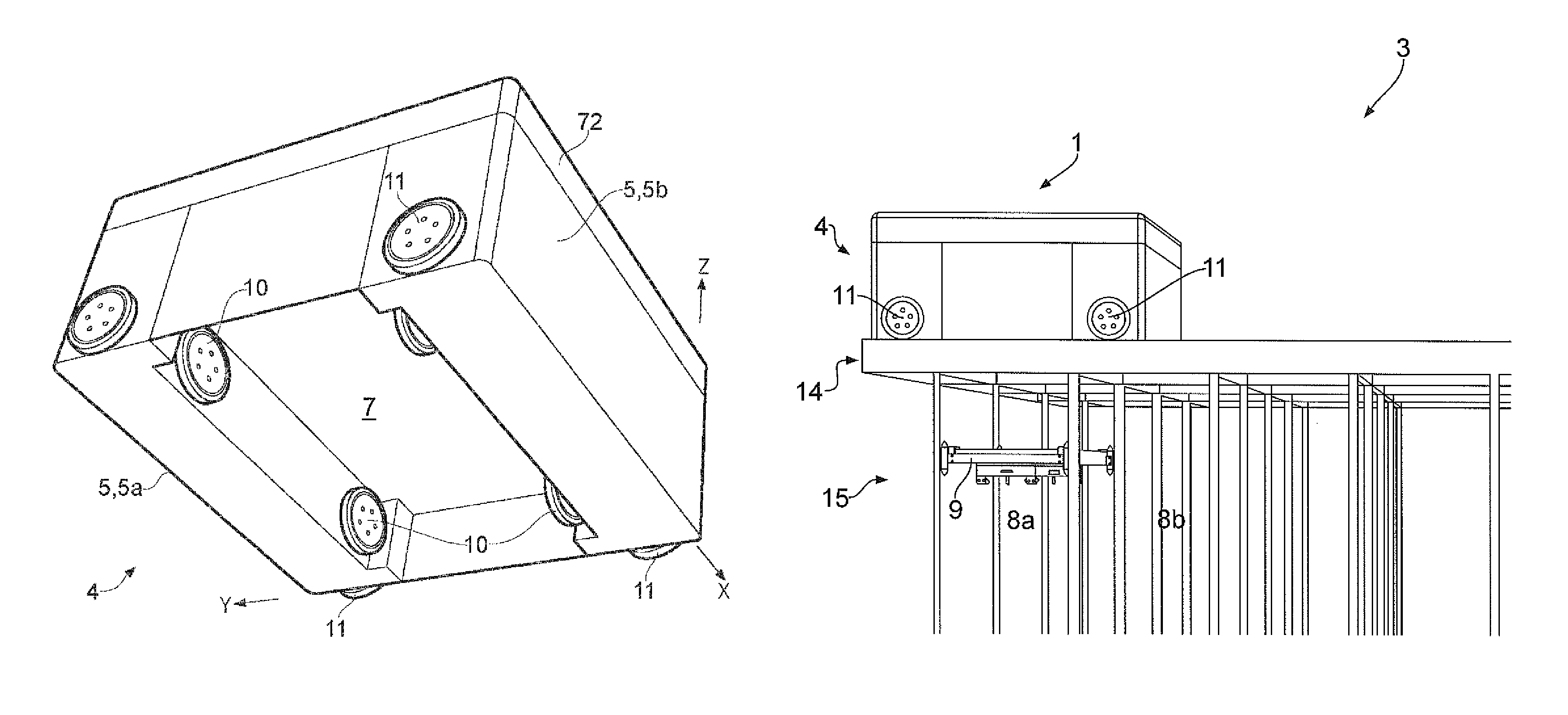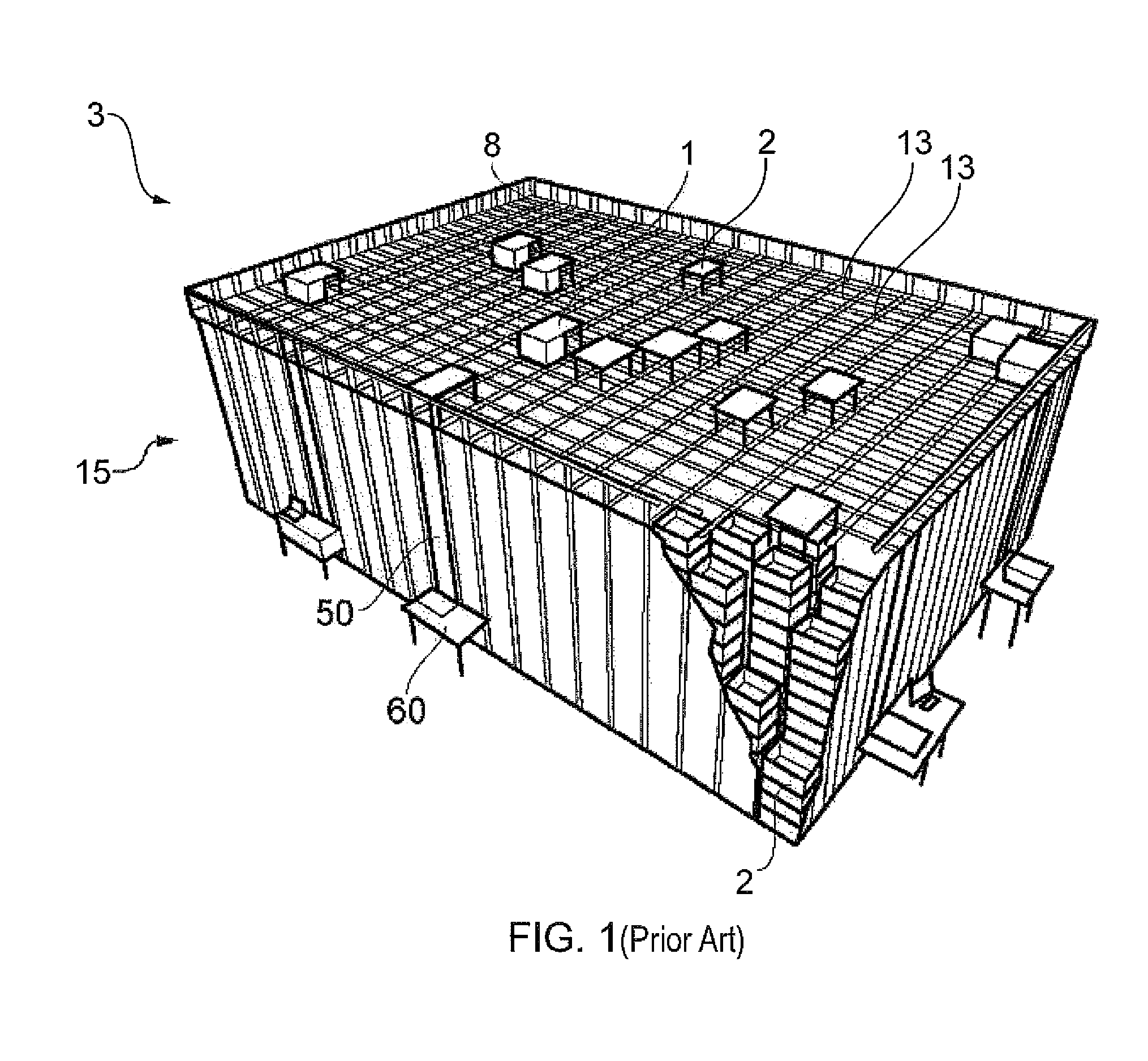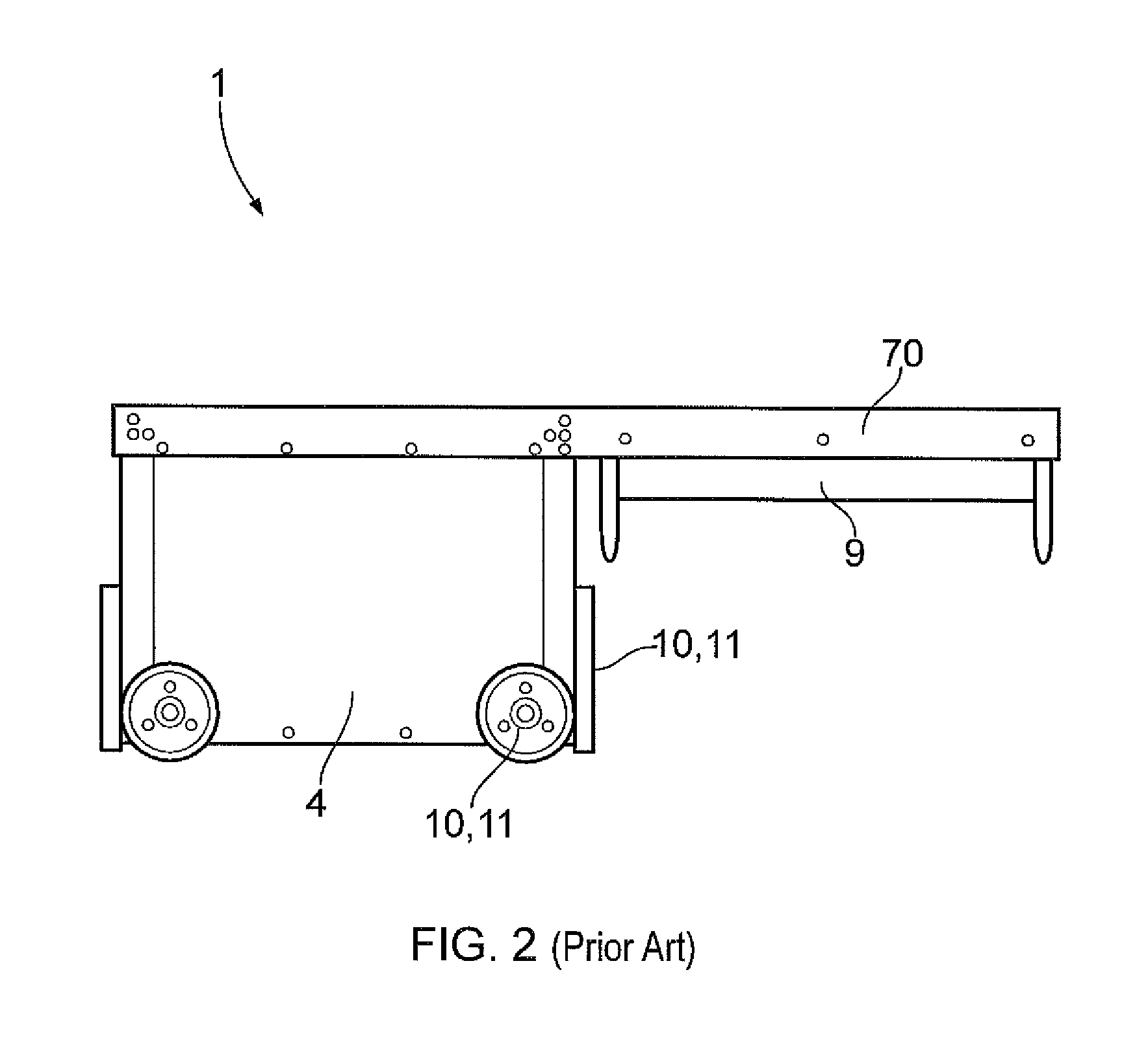Robot for transporting storage bins
a robot and storage bin technology, applied in the field of remote operation vehicles, can solve the problems of undesired speed reduction, limit the maximum handling weight of the robot, etc., and achieve the effects of effective removal of undesired torque, high degree of symmetry, and improved stability of the robot or vehicl
- Summary
- Abstract
- Description
- Claims
- Application Information
AI Technical Summary
Benefits of technology
Problems solved by technology
Method used
Image
Examples
Embodiment Construction
[0028]FIG. 1 is a schematic, partly cut perspective view of a storage system according to the prior art, and FIG. 2 is a sectional view of a corresponding prior art robot. Both figures have already been referred to earlier in the text.
[0029]FIGS. 3 and 4 gives a perspective view in two different angles of the inventive robot 1 comprising a rectangular vehicle body or framework 4 with a cavity 7 centrally arranged within the body 4, a top lid 72 covering the top part of the body 4, a first set of four wheels 10 mounted inside the cavity 7 and in parallel to the interior walls of the body 4 and a second set of four wheels 11 mounted in parallel to the exterior walls of the body 4. The first and second set of wheels 10,11 are oriented perpendicular to each other. Further, the vehicle body 4 also includes side parts 5, 5a, 5b arranged on both sides of the cavity 7 along at least one of the robots 1 direction of movements. For the sake of clarity a Cartesian coordinate system is shown wi...
PUM
 Login to View More
Login to View More Abstract
Description
Claims
Application Information
 Login to View More
Login to View More - R&D
- Intellectual Property
- Life Sciences
- Materials
- Tech Scout
- Unparalleled Data Quality
- Higher Quality Content
- 60% Fewer Hallucinations
Browse by: Latest US Patents, China's latest patents, Technical Efficacy Thesaurus, Application Domain, Technology Topic, Popular Technical Reports.
© 2025 PatSnap. All rights reserved.Legal|Privacy policy|Modern Slavery Act Transparency Statement|Sitemap|About US| Contact US: help@patsnap.com



